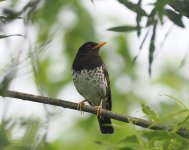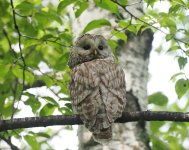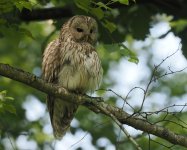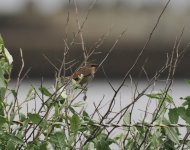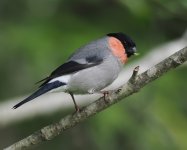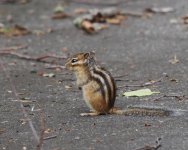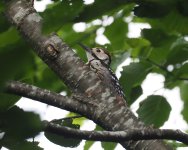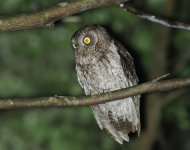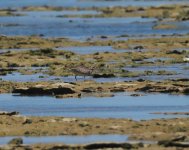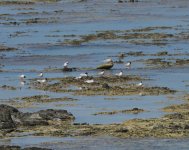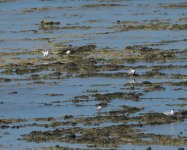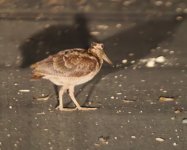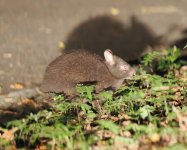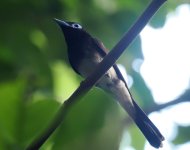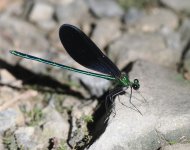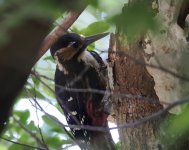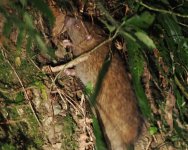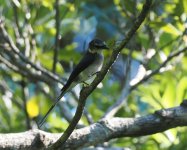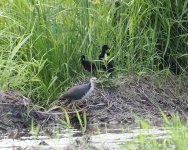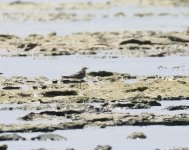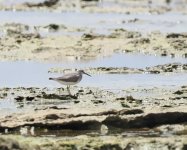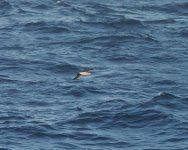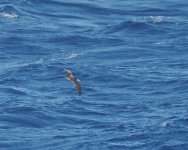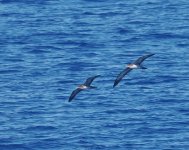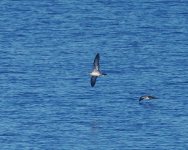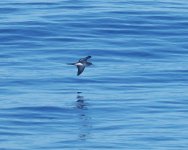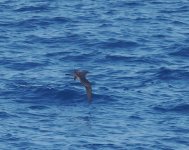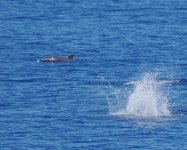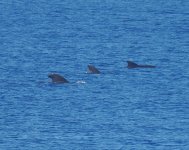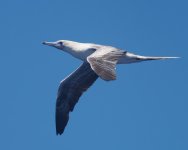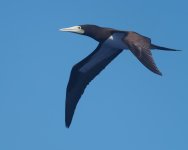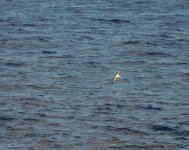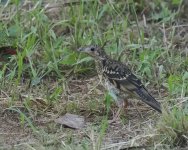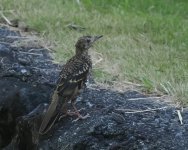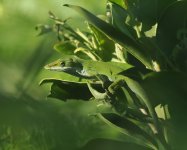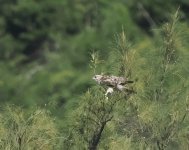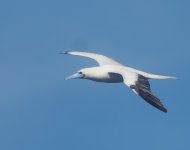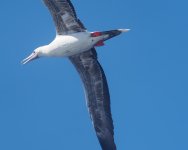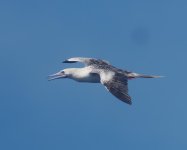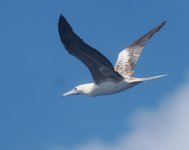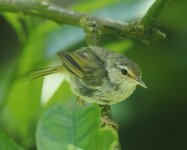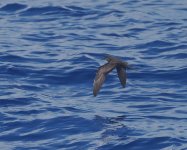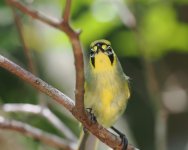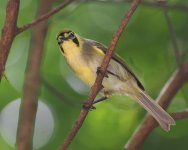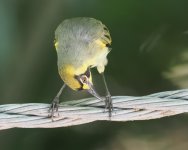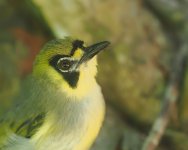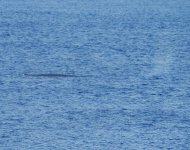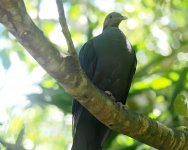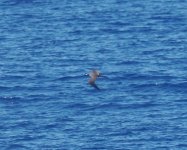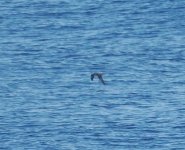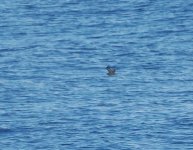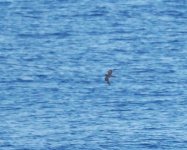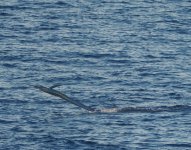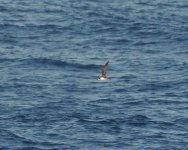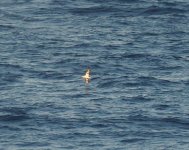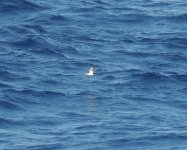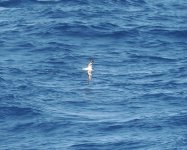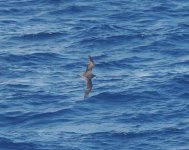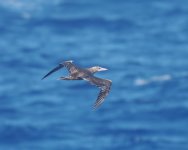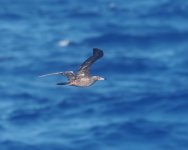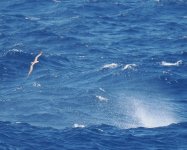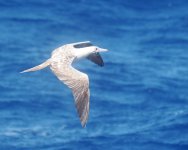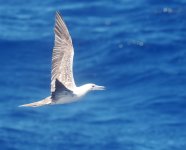
The forecast for 6th July was quite mixed, with a band of rain expected to pass through eastern Hokkaido. The rain was mostly light early in the morning, and I had another look around the forest near Lake Onneto. I was hoping to have another look for Sakhalin Grasshopper Warbler, which I'd heard there the previous day and which I was till hoping to get tickable views of. Sadly, none were heard.
After breakfast, I checked out of Lodge Furen with the rain now coming down heavily. I was hoping to look at various spots along the coast, but the poor weather made any birding a challenge and eventually I continued on westwards. By lunchtime, I was through the rain. I decided to stop in a park in the small town of Ikeda, where I'd noticed some interesting sightings on Ebird. The park was fairly small and, by this time of the day, it was hot and (compared to other places I'd been) rather busy with mosquitoes. A few commoner forest birds were in the woodland but nothing too much of interest appeared. I was heading back to the car park when I heard a few small birds making some vigorous calls. I stopped to look around and soon after caught the movement of a much larger bird out of the corner of my eye. When looked around to see what this was, I was more than a bit surprised to see it was a fantastic Ural Owl. It sat quite happily on a low branch for some time, peering around in different directions. Soon after, another flew past and perched off to the right. Presumably, this was a pair. I spent quite some watching them and taking photos. The first bird, flew out to grapple with something unseen around a tree trunk before flying off and perching more distantly. Absolutely amazing.
My next stop was in the riverine woodland and scrub around Obihiro. A male Siberian Rubythroat popped up almost immediately and soon after I was pleased to find a male Lesser Spotted Woodpecker, my first in Japan. I soon heard what I was hoping for: a Sakhalin Grasshopper Warbler. With a bit of encouragement, it showed fairly well in some low trees. They generally keep moving fast but this one stopped for a moment or two in a few places to give reasonable views. Quite a big, gingery warbler. In the same area, I also got my best looks at a male Japanese Thrush, which posed nicely on a low branch for a while.
The day was getting on and I turned northwards, spotting a White-throated Needletail flying over the road at one point. I continued into the mountains to my hotel by the shores of Lake Shikaribetsu - a really beautiful spot.
After breakfast, I checked out of Lodge Furen with the rain now coming down heavily. I was hoping to look at various spots along the coast, but the poor weather made any birding a challenge and eventually I continued on westwards. By lunchtime, I was through the rain. I decided to stop in a park in the small town of Ikeda, where I'd noticed some interesting sightings on Ebird. The park was fairly small and, by this time of the day, it was hot and (compared to other places I'd been) rather busy with mosquitoes. A few commoner forest birds were in the woodland but nothing too much of interest appeared. I was heading back to the car park when I heard a few small birds making some vigorous calls. I stopped to look around and soon after caught the movement of a much larger bird out of the corner of my eye. When looked around to see what this was, I was more than a bit surprised to see it was a fantastic Ural Owl. It sat quite happily on a low branch for some time, peering around in different directions. Soon after, another flew past and perched off to the right. Presumably, this was a pair. I spent quite some watching them and taking photos. The first bird, flew out to grapple with something unseen around a tree trunk before flying off and perching more distantly. Absolutely amazing.
My next stop was in the riverine woodland and scrub around Obihiro. A male Siberian Rubythroat popped up almost immediately and soon after I was pleased to find a male Lesser Spotted Woodpecker, my first in Japan. I soon heard what I was hoping for: a Sakhalin Grasshopper Warbler. With a bit of encouragement, it showed fairly well in some low trees. They generally keep moving fast but this one stopped for a moment or two in a few places to give reasonable views. Quite a big, gingery warbler. In the same area, I also got my best looks at a male Japanese Thrush, which posed nicely on a low branch for a while.
The day was getting on and I turned northwards, spotting a White-throated Needletail flying over the road at one point. I continued into the mountains to my hotel by the shores of Lake Shikaribetsu - a really beautiful spot.




